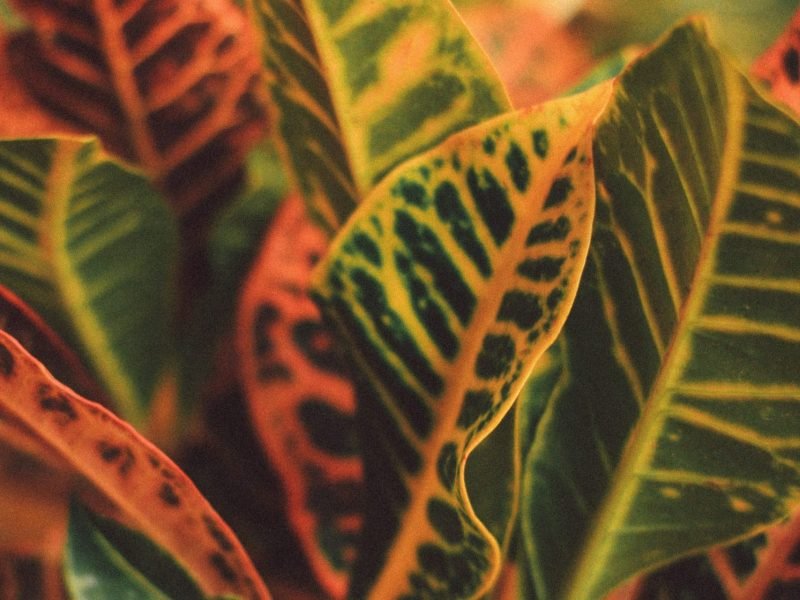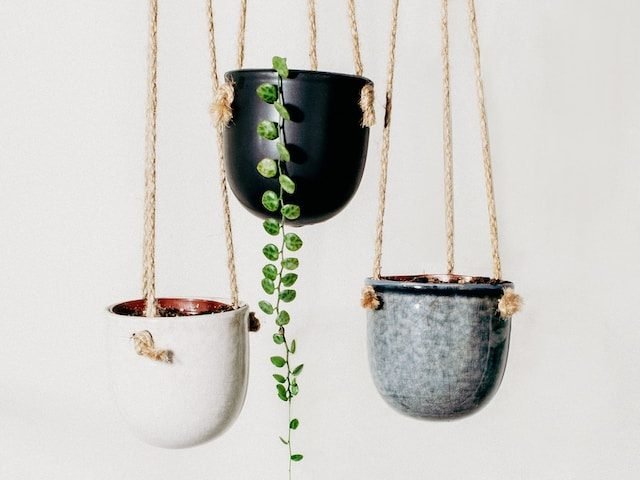
If you’ve started to notice that the leaves on your Croton Plant have started curling, then this definitely means something isn’t quite right. However, you’ll be pleased to know that curling leaves are often actually one of the earlier signs of unhappiness so hopefully, this means you’ve caught the issue early before it’s really taken over your plant.
Below we will go through each of the main causes of curling leaves on a Croton Plant so that you can treat the issue properly and prevent it from causing even more damage to your plant.
Curling leaves on a Croton Plant can indicate underwatering
The most common factor that can lead to curling leaves on a Croton Plant is underwatering. Whilst it won’t cause issues from one day to the next, a consistent lack of moisture in the soil can really start to damage your plant’s health.
If you have caught the issue early then curling leaves may be the only sign of trouble but other symptoms of underwatering include brown spots or patches on the leaves, a drooping plant or entire leaves turning brown and crispy.
Before you go and drown your Croton Plant with water to hopefully fix the issue, you need to be sure that this is the cause. Watering a plant when it really doesn’t need it will cause a whole range of other issues. To confirm the diagnosis, take your Croton Plant out of the pot to inspect how the potting mix feels. If underwatered, the potting mix will fall apart and feel very sandy. You will also see that some of the roots on your Croton Plant have started to crisp up if you have been underwatering for a while.
Once you have determined that your Croton Plant is suffering from a lack of water, slowly reintroduce water to your plant rather than drowning it. Any dramatic and sudden changes in their environment can cause them to go into shock and become quite stressed. The best way to avoid this is to water your plant a little bit once a day for a week so that the soil can become moist but not waterlogged.
In future, to avoid overwatering from causing curling leaves and other issues in future, use a moisture meter to check how moist the soil is. This prevents you from having to take your plant out of its pot every time you might want to water it.
Low humidity could also be to blame
A lack of humidity in the air can cause your Croton Plant’s leaves to curl, and eventually maybe even fall off if the issue persists for a long time. This happens because curling the leaves is a mechanism plants use to retain as much water as possible.
The only way to really diagnose this issue is by using a humidity monitor to confirm that dry air is causing the curling leaves.
To treat the issue, start by misting your Croton Plant every few days with a spray bottle. If you want an even easier solution to humidity issues, consider investing in a humidifier. They will keep a nice steady humidity level and your humidity-loving plants will thank you for it!
Environmental stress can also cause curling leaves
Houseplants are just like humans in a way as they can become quite stressed out. Things like repotting, propagating or moving your plant to a new spot in your home can cause your Croton Plant to get a little shocked and the leaves may start curling as a result. It is nothing to worry about and it will just take some time for your plant to return to normal and for the leaves to naturally uncurl.
One thing to make sure of if you have moved your Croton Plant to a new spot is that the conditions are the same, if not better than the one it was previously in. Your Croton Plant will probably survive if the conditions are less suited to its requirements but it may just grow a little slower and leggier than before.
The best way to determine if the environment is right is by using a light meter, as well as a thermometer and humidity gauge to check over the different factors.
Curling Croton Plant leaves can suggest overfertilization
Croton Plants aren’t heavy feeders and you can still actually see plenty of new healthy growth without using any fertiliser at all.
However, if you have been feeding your Croton Plant too frequently then this can start to cause some issues to slowly develop. You won’t suddenly see the leaves all start curling from one day to the next but over time you’ll start to notice something is wrong.
To fix the issue, remove any fertiliser spikes or replace the soil if you are using pellets or water-soluble fertiliser and hold off feeding for at least a year to let your Croton Plant recover.
Moving forward it’s actually a choice whether you return to feeding your Croton Plant at all as if the environment is right, your plant will thrive without it!
Pests can be a worrying cause of curling leaves
Whilst pests are a rarer issue compared to some of the problems listed above, they can be a very worrying problem so it’s important you rule them out straight away. If your plant spends any time outdoors during the year, then this can increase the likelihood that pests are causing the curling leaves on your plant.
The first thing to do to diagnose this issue is to inspect your Croton Plant thoroughly by looking at the undersides of the leaves, the stems but also in the potting mix. You want to look out for any of the following signs: holes in the leaves, brown or yellow spots, white webbing, white powder and of course visible pests on the plant or in the potting mix. Using a magnifying glass can really help here.
If you do find pests (or signs of them) isolate your Croton Plant immediately to stop the spread across your other plants and make sure to inspect all of your houseplants.
We recommend giving your infected plants a shower and then treating them with neem oil to fight the infestation.
Those are the most common factors that can lead to curling leaves on a Croton Plant. Once you’ve made any changes to the care or environment, it’s important that you keep a close eye on your plant over the next few weeks to make sure that things are progressing in the right direction.
Take a look through our Croton Plant care guide to learn more about how to best keep your plant happy, healthy and thriving for years to come!















